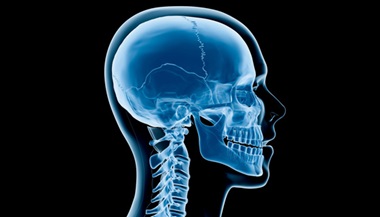Head Injury
What is a head injury?
Head injuries are one of the most common causes of disability and death in adults. The injury can be as mild as a bump, bruise (contusion), or cut on the head, or can be moderate to severe in nature due to a concussion, deep cut or open wound, fractured skull bone(s), or from internal bleeding and damage to the brain.
A head injury is a broad term that describes a vast array of injuries that occur to the scalp, skull, brain, and underlying tissue and blood vessels in the head. Head injuries are also commonly referred to as brain injury, or traumatic brain injury (TBI), depending on the extent of the head trauma.
Head injuries are rising dramatically--about 1.7 million people have a TBI each year. Millions of Americans are alive today who have had a head injury and now need help with the activities of daily living, costing the country more than $56 billion per year.
What are the different types of head injury?
The following are some of the different types of head injuries:
Concussion. A concussion is an injury to the head area that may cause instant loss of awareness or alertness for a few minutes up to a few hours after the traumatic event.
Skull fracture. A skull fracture is a break in the skull bone. There are four major types of skull fractures, including the following:
Linear skull fractures. This is the most common type of skull fracture. In a linear fracture, there is a break in the bone, but it does not move the bone. These patients may be observed in the hospital for a brief amount of time, and can usually resume normal activities in a few days. Usually, no interventions are necessary.
Depressed skull fractures. This type of fracture may be seen with or without a cut in the scalp. In this fracture, part of the skull is actually sunken in from the trauma. This type of skull fracture may require surgical intervention, depending on the severity, to help correct the deformity.
Diastatic skull fractures. These are fractures that occur along the suture lines in the skull. The sutures are the areas between the bones in the head that fuse when we are children. In this type of fracture, the normal suture lines are widened. These fractures are more often seen in newborns and older infants.
Basilar skull fracture. This is the most serious type of skull fracture, and involves a break in the bone at the base of the skull. Patients with this type of fracture frequently have bruises around their eyes and a bruise behind their ear. They may also have clear fluid draining from their nose or ears due to a tear in part of the covering of the brain. These patients usually require close observation in the hospital.
Intracranial hematoma (ICH). There are several types of ICH, or blood clots, in or around the brain. The different types are classified by their location in the brain. These can range from mild head injuries to quite serious and potentially life-threatening injuries. The different types of ICH include the following:
Epidural hematoma. Epidural hematomas occur when a blood clot forms underneath the skull, but on top of the dura, the tough covering that surrounds the brain. They usually come from a tear in an artery that runs just under the skull called the middle meningeal artery. Epidural hematomas are usually associated with a skull fracture.
Subdural hematoma. Subdural hematomas occur when a blood clot forms underneath the skull and underneath the dura, but outside of the brain. These can form from a tear in the veins that go from the brain to the dura, or from a cut on the brain itself. They are sometimes, but not always, associated with a skull fracture.
Contusion or intracerebral hematoma. A contusion is a bruise to the brain itself. A contusion causes bleeding and swelling inside of the brain around the area where the head was struck. Contusions may occur with skull fractures or other blood clots such as a subdural or epidural hematoma. Bleeding that occurs inside the brain itself (also called intraparenchymal hemorrhage) can sometimes occur spontaneously. When trauma is not the cause, the most common causes are long-standing, high blood pressure in older adults, bleeding disorders in either children or adults, or the use of medications that cause blood thinning or certain illicit drugs.
Diffuse axonal injury (DAI). These injuries are fairly common and are usually caused by shaking of the brain back and forth, which can happen in car accidents, from falls or shaken baby syndrome. Diffuse injuries can be mild, such as with a concussion, or may be very severe, as in diffuse axonal injury (DAI). In DAI, the patient is usually in a coma for a prolonged period of time, with injury to many different parts of the brain.
What causes a head injury?
There are many causes of head injury in children and adults. The most common traumatic injuries are from motor vehicle accidents (automobiles, motorcycles, or struck as a pedestrian), from violence, from falls, or as a result of child abuse. Subdural hematomas and brain hemorrhages (called intraparenchymal hemorrhages) can sometimes happen spontaneously.
What causes bruising and internal damage to the brain?
When there is a direct blow to the head, shaking of the child (as seen in many cases of child abuse), or a whiplash-type injury (as seen in motor vehicle accidents), the bruising of the brain and the damage to the internal tissue and blood vessels is due to a mechanism called coup-countrecoup. A bruise directly related to trauma, at the site of impact, is called a coup (pronounced COO) lesion. As the brain jolts backwards, it can hit the skull on the opposite side and cause a bruise called a countrecoup lesion. The jarring of the brain against the sides of the skull can cause shearing (tearing) of the internal lining, tissues, and blood vessels that may cause internal bleeding, bruising, or swelling of the brain.
What are the symptoms of a head injury?
The person may have varying degrees of symptoms associated with the severity of the head injury. The following are the most common symptoms of a head injury. However, each individual may experience symptoms differently. Symptoms may include:
Mild head injury:
Raised, swollen area from a bump or a bruise
Small, superficial (shallow) cut in the scalp
Headache
Sensitivity to noise and light
Irritability
Confusion
Lightheadedness and/or dizziness
Problems with balance
Nausea
Problems with memory and/or concentration
Change in sleep patterns
Blurred vision
"Tired" eyes
Ringing in the ears (tinnitus)
Alteration in taste
Fatigue or lethargy
Moderate to severe head injury (requires immediate medical attention)--symptoms may include any of the above plus:
Loss of consciousness
Severe headache that does not go away
Repeated nausea and vomiting
Loss of short-term memory, such as difficulty remembering the events that led right up to and through the traumatic event
Slurred speech
Difficulty with walking
Weakness in one side or area of the body
Sweating
Pale skin color
Seizures or convulsions
Behavior changes including irritability
Blood or clear fluid draining from the ears or nose
One pupil (dark area in the center of the eye) is dilated, or looks larger, than the other eye and doesn't constrict, or get smaller, when exposed to light
Deep cut or laceration in the scalp
Open wound in the head
Foreign object penetrating the head
Coma (a state of unconsciousness from which a person cannot be awakened; responds only minimally, if at all, to stimuli; and exhibits no voluntary activities)
Vegetative state (a condition of brain damage in which a person has lost his thinking abilities and awareness of his surroundings, but retains some basic functions such as breathing and blood circulation)
Locked-in syndrome (a neurological condition in which a person is conscious and can think and reason, but cannot speak or move)
The symptoms of a head injury may resemble other problems or medical conditions. Always consult your doctor for a diagnosis.
How are head injuries diagnosed?
The full extent of the problem may not be completely understood immediately after the injury, but may be revealed with a comprehensive medical evaluation and diagnostic testing. The diagnosis of a head injury is made with a physical examination and diagnostic tests. During the examination, the doctor obtains a complete medical history of the patient and family and asks how the injury occurred. Trauma to the head can cause neurological problems and may require further medical follow up.
Diagnostic tests may include:
Blood tests
X-ray. A diagnostic test that uses invisible electromagnetic energy beams to produce images of internal tissues, bones, and organs onto film.
Computed tomography scan (also called a CT or CAT scan). A diagnostic imaging procedure that uses a combination of X-rays and computer technology to produce horizontal, or axial, images (often called slices) of the body. A CT scan shows detailed images of any part of the body, including the bones, muscles, fat, and organs. CT scans are more detailed than general X-rays.
Electroencephalogram (EEG). A procedure that records the brain's continuous, electrical activity by means of electrodes attached to the scalp.
Magnetic resonance imaging (MRI). A diagnostic procedure that uses a combination of large magnets, radiofrequencies, and a computer to produce detailed images of organs and structures within the body.
Treatment of a head injury
Specific treatment of a head injury will be determined by your doctor based on:
Your age, overall health, and medical history
Extent of the head injury
Type of head injury
Your tolerance for specific medications, procedures, or therapies
Expectations for the course of the head injury
Your opinion or preference
Depending on the severity of the injury, treatment may include:
Ice
Rest
Topical antibiotic ointment and adhesive bandage
Observation
Immediate medical attention
Stitches
Hospitalization for observation
Moderate sedation or assistance with breathing that would require being placed on a breathing machine, or mechanical ventilator or respirator
Surgery
Treatment is individualized, depending on the extent of the condition and the presence of other injuries. If the patient has a severe head injury, he or she may require monitoring for increased intracranial pressure (pressure inside the skull). Head injury may cause the brain to swell. Since the brain is covered by the skull, there is only a small amount of room for it to swell. This causes pressure inside the skull to increase, which can lead to brain damage.
How is ICP monitored?
Intracranial pressure is measured in two ways. One way is to place a small hollow tube (catheter) into the fluid-filled space in the brain (ventricle). Other times, a small, hollow device (bolt) is placed through the skull into the space just between the skull and the brain. Both devices are inserted by the doctor either in the intensive care unit (ICU) or in the operating room. The ICP device is then attached to a monitor that gives a constant reading of the pressure inside the skull. If the pressure goes up, it can be treated right away. While the ICP device is in place the patient will be given medication to stay comfortable. When the swelling has gone down and there is little chance of more swelling, the device will be removed.
Lifelong considerations for a person with a head injury
The key is to promote a safe environment for children and adults and to prevent head injuries from occurring in the first place. The use of seat belts when riding in the car and helmets (when worn properly) for activities, such as bicycle riding, in-line skating, and skateboarding may protect the head from sustaining severe injuries.
Persons who suffer a severe brain injury may lose muscle strength, fine motor skills, speech, vision, hearing, or taste function, depending on the brain region involved and the severity of brain damage. Long- or short-term changes in personality or behavior may also occur. These persons require long-term medical and rehabilitative (physical, occupational, or speech therapy) management.
The extent of the person's recovery depends on the type of brain injury and other medical problems that may be present. It is important to focus on maximizing the person's capabilities at home and in the community. Positive reinforcement will encourage the patient to strengthen his/her self-esteem and promote independence.
Regenerating Neurons | Science: Out of the Box
For a long time, scientists thought that brain and spinal cord cells, once damaged, could not be fixed. But that may not be true. Watch neuroscientist David Linden explain how some nerve cells can repair themselves.






